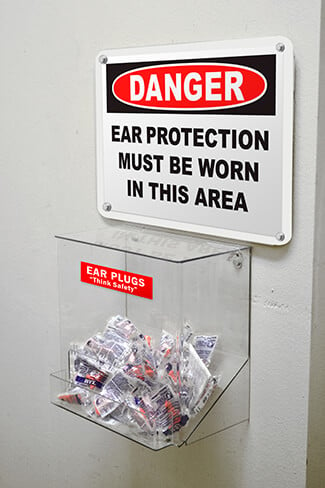Resource Navigation
USDA Increases Poultry Processing Line Speeds
03
February,
2023
2 MINUTE READ

Poultry slaughtering is a quick yet systematic process. Once bare and empty, the carcasses are then dressed and prepped for packaging and warehousing, before being sent to grocery stores and on to kitchen tables throughout the world. According to the National Chicken Council, most poultry processing steps can have a line speed of as many as 140 birds per minute. Unrestricted speeds are continually being sought to quicken industry output but are being turned down by OSHA. However, recently the U.S. Department of Agriculture said it will allow some poultry processing plants to increase their line speed to 175 bpm through a waiver program called the New Poultry Inspection System. While poultry processing safety has improved in many areas due to newer equipment systems, corporate culture, safety gear, and training, there is still potential for production hazards.
Faster, Smarter, Safer
The line speed approval in 2019 is the latest in an ongoing debate between the poultry industry and regulators. The line speed increase has received support as well as opposition from lawmakers to industry experts. Accidents and injuries are already a concern in the poultry processing industry. OSHA lists poultry processing as the 12th most dangerous industry, with 180 severe injuries reported between 2015 and 2016. Its injury rate is twice the national average, with illness rates also well beyond the national average.
Workplace injuries among poultry workers are underreported, according to the Government Accountability Office and OSHA. Cuts from knives and burns from cooler rooms and heat sealing during the vacuum packing process are just a few injury possibilities. Other top hazards in the poultry processing industry include:
- Walking and working surfaces:
- A lack of visual cues for foot and vehicle traffic in working areas can open up the potential for accidents and other injuries.
- Floor surfaces are continually a focus in coolers and sanitation work throughout poultry processing facilities, and they often can become slippery.
- Equipment safety:
- Especially in a wet environment, electrical equipment needs to be grounded.
- During ordinary operation, proper machine guarding is necessary to keep workers safe.
- During downtime for equipment maintenance, effective lockout/tagout (LO/TO) systems are called for.
- Ergonomics:
- A variety of injuries and illnesses can occur from repeated movements or overexertion, which can be serious issues when production speeds increase. OSHA has a guide to help mitigate ergonomic hazards.
 "The good news is the industry is working very hard to make the workplace safer," according to Ray Riley, an animal science expert at Texas A&M University. "Today, more safety gear is utilized, equipment manufacturers are designing safer equipment to use, employers are providing safety training to their employees and establishing guidelines to provide worker safeguards."
"The good news is the industry is working very hard to make the workplace safer," according to Ray Riley, an animal science expert at Texas A&M University. "Today, more safety gear is utilized, equipment manufacturers are designing safer equipment to use, employers are providing safety training to their employees and establishing guidelines to provide worker safeguards."
Maintain Process Control
Management understanding and training for hazard factors is important in maintaining a strong and safe workplace. To help mitigate hazards in the poultry processing industry, managers can use visual communication solutions. Are aisles clearly marked and signs posted where forklifts move throughout the processing plant and around loading docks? Prevent injuries by posting signs and labels that notify workers of pinch points, start-up procedures, and other mechanical or electrical hazards. Are PPE stations organized and easy to find? Help prevent ergonomic issues, such as overreaching, by posting working height recommendations. Label chemical and product barrels for clear identification as well as stock spill containment products, ready for use when needed.
Maintain a compliant processing facility, improve efficiency, and keep facility workers safe. Graphic Products is an innovative leader, providing solutions for safety and visual communication since 1970. Learn how visuals such as signs, labels, and floor marking can make a difference in any safety program in a free visual workplace management guide. Save time and production costs as work environments and equipment changes. Create tough, lasting visuals quickly and on the spot using a DuraLabel sign and label printer. Choose anti-slip materials that will work in slippery and wet areas, remain visible in low-light areas, resist chemical exposure, or retain effectiveness in refrigerated environments.
RELATED RESOURCES

State Departments of Transportation Win Awards for Public Projects
As a supplier to Departments of Transportation (DOTs) throughout the U.S., Duralabel would like to ...
Read
The Force Can't Protect Jedis From Workplace Hazards
HSE sues "Star Wars" production over safety violations. Foodles Production Limited recently learned the hard ...
Read
MSHA Issues New Rule for Proximity Detection
Detection systems are used to help protect miners from being crushed or pinned in confined underground mine ...
Read.png)


